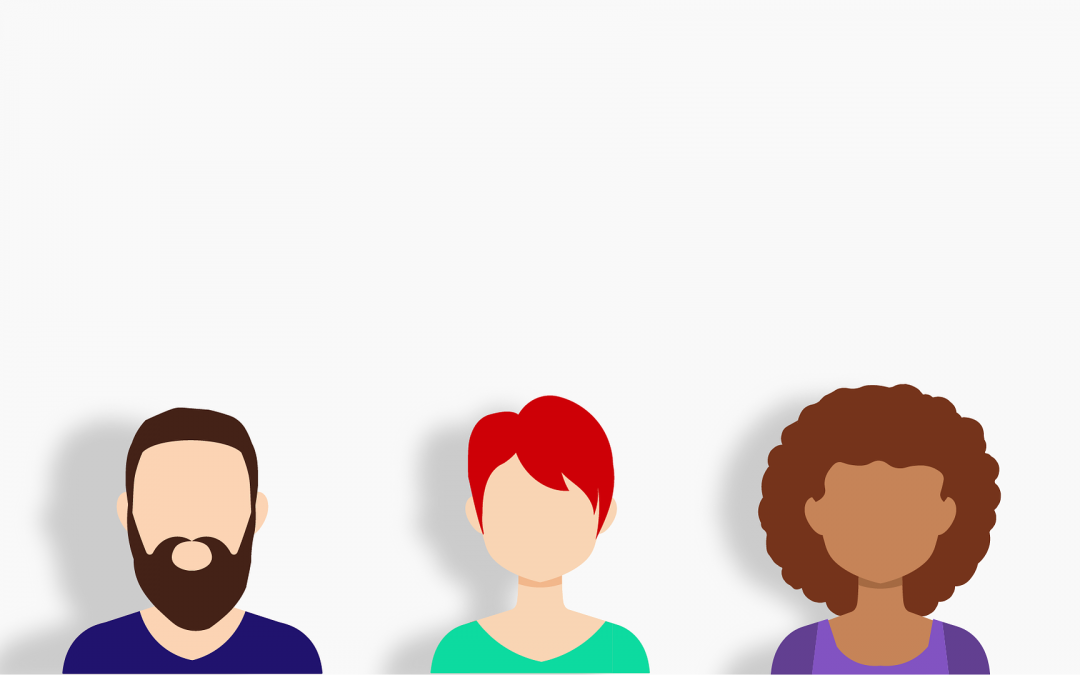
by Scott Howard | Feb 28, 2018 | Marketing and Advertising Insights, Really? The Personal ScLoHo, ScLoHo Sales Tips, ScLoHo's Fort Wayne, The Not-So-Secret Writings of ScLoHo, Uncategorized
I bought a car this month and thought I’d share some lessons for you and your business in this essay I’m calling Selling a Salesperson.
While I am keenly aware of the process because of my profession, the general public is more aware of the tactics too than ever before. Here’s the list of 9 observations I wrote right after buying my car:
- Customers may be smarter or better informed than you.
- Over reliance on certain sales phrases can actually work against you.
- Ask the right questions and pay attention to the answers.
- Using your customers name is nice, except when you get it wrong.
- Upselling works with some people but you have to be straight with your customer.
- Customers can walk away if they don’t like the deal you are offering.
- Tracking your advertising is usually a guessing game at best.
- Honesty wins and builds trust.
- Follow through helps with referrals and additional sales.
As I share my story, see how it applies to you and your business and what lessons you can apply to make things better for all.
My wife, Kathy, was driving home from a friends house and noticed the temperature gauge on her 1999 Chevy Lumina was sneaking into the danger zone so she pulled over and let it cool down before heading all the way back to our place. She took it to our mechanic who popped open the hood, opened a few things and pronounced the verdict: blown head-gasket.
(Kathy found this car a few years ago as a steal. Only 30,000 miles and in decent shape. Since then she has racked up another 20,000 miles and we’ve had to replace a couple tires, but she loves this classic beast.)
When I heard about the situation, I knew we were not going to spend a thousand bucks or more on this no matter how much attachment my wife had to her baby. I followed the advice of a friend to try a special sealant and when that failed, I started shopping.
I started the process online, doing research and asking the auto experts in my family that I trust for recommendations. On Friday night, while I’m at a hockey game, they are sending me links to cars they found online in my price range that were recommended. Saturday I narrowed it down from 10 to 2 cars and then Sunday, when the car dealers were closed, I visited and checked the two contenders out in person.
By this time, we decided that I was going to get a new (used) car and my wife was going to reluctantly inherit mine. Not that she didn’t want my car, but she LOVED hers and it was hard to consider saying goodbye to her baby.
Sunday night, I decided which car I was going to buy. It was because of who I was buying from more than anything else. A Toyota Prius from a used car dealer or a Honda Fit from the Honda Dealer, and I decided the Honda Fit would likely be my next ScLoHoMobile. After doing my online research, it was my gut that told me to check out the Fit and I sent the dealer a note that I was interested using the online form on their website.
Monday morning, I got a phone call from Ross, one of the sales guys at Don Ayres Honda to set up a test drive for 12:30. Remember point 1: Customers may be smarter or better informed than you.
When I arrived at the dealership, I knew who I was looking for because I looked on the Don Ayres website and saw a picture of Ross. I surprised him when I arrived and simply said, “Hi Ross, I’m Scott Howard.” It caught him off guard because we had never met in person before, but I did my research.
Your potential customers are also doing their research and may know more than you realize
In my case, I was better informed than Ross on this vehicle. I spent a few hours researching not just this model but also this particular car using the free Carfax that was in the online listing. When we got in for the test drive, Ross told me he didn’t know how to drive a manual transmission which was not problem for me, I did.
When I walked in and told started my conversation with Ross, before the test drive, I told him I was planning on buying the Honda Fit if the test drive checked out and the deal was good. I knew what options I had with payments so I was 95% sold before Ross saw me.
Before the test drive, Ross asked me numerous routine questions that would be used to start the finance process and I started noticing point #2: Over reliance on certain sales phrases can actually work against you. No matter what I said, he responded with, “Great!”, “Fantastic!”, or some other positive affirmation. Some of my answers were certainly not worthy of a “Fantastic!” like when I told him I’ve lived in my current house for nearly 4 years. I almost tossed in a comment like, “my Dad died”, just to see if I’d get a “Great!” but I controlled my tongue.
Which brings me to point #3: Ask the right questions and pay attention to the answers. Ross was not paying attention to the answers I was giving him. At one point in our conversation he asked me if I wanted to look at any other cars, I told him, “no, I’m hear to buy the Honda Fit.” A few minutes later he offered to show me some other cars and again I reminded him, “I’m here to buy the Honda Fit.”
Point #4: Using your customers name is nice, except when you get it wrong. My name is Scott, yet I counted at least 3 times that he called me Steve in our interaction. When I looked over the paperwork, I double checked that it said Scott Howard and not Steve Howard. I’ve been guilty of this every once in awhile myself but I am much better because I decided to overcome this kind of mistake.
Finally it was time for me to talk with Taylor in Finance. I had a few minutes between the time I was first introduced to her and when we went to her office to work out the final details so I Googled her from my smartphone and found her LinkedIn profile. From that I learned that this was her first job in automotive and she had been there less than a year. I knew where she went to college and that she had worked in a coffee shop awhile ago. In my conversation with her, as she was trying to get me to buy stuff I didn’t want to buy, I sprinkled some of the information I learned into our talk, not in a creepy way, but just enough to throw off her pacing of her sales pitch.
This part of the car buying process is not my favorite but I’ve made it a game. Taylor was there to seal the deal and get as much money from me as possible. Those Finance people are also sales people, sometimes better than the salesperson on the floor. Which brings me to our next point: Upselling works with some people but you have to be straight with your customer.
Because I was buying a used car that was out of warranty, they offered me three additional warranty options. Each time I declined. Why? I did the math and I knew my own risk tolerance. The first option would add $100 to my monthly payment for the life of my loan. That would mean paying about $5,000 extra. I knew that if I needed a repair for my Honda Fit that cost anywhere up to $5000, I had the means to pay for it myself. The other options she offered were not anything I wanted either.
Under most circumstances, customers have an alternative to spending money with you.
Remember I was 95% sold on buying the Honda Fit from Don Ayres Honda, before I talked to Ross or Taylor. It was their deal to lose. Because, point #6: Customers can walk away if they don’t like the deal you are offering.
In the end, I bought the car and Taylor asked me to tell her how I decided to shop at Don Ayres that day by using a tracking sheet, On a sheet of paper where various advertising and marketing options and I was asked to circle the one that fit. I circled the Cars.com logo and no further questions were asked. Point #7: Tracking your advertising is usually a guessing game at best.
Cars.com is not why I bought the car from Don Ayres. It just happened to be the website that first introduced me to the car along with several others. And it really wasn’t the website, it was my son-in-law who sent me a link to the car and also recommended both the car and dealership to me. Cars.com didn’t deserve credit for that sale. But when I was given the choices on the sheet of paper, my son-in law was not listed as one of the choices.
If you want to track the effectiveness of your advertising and marketing, you need to ask the right questions otherwise you are bound to get inaccurate answers.
Point #8: Honesty wins and builds trust. I may be coming off a little harsh as you read this, but overall I really like Don Ayres Honda and here’s a couple reasons why. Ross told me at the beginning of our conversation that he is not a car guy. Not that he doesn’t like cars, but he is more like me, someone who doesn’t know all the ins and outs of what’s under the hood and I really don’t care, except for my car. My expectations are that everything works and that leads me to what happened after the sale was complete…
I noticed when Ross and I were talking that there was only one key, so I asked for them to provide me with a second key as part of the deal. No problem. That night however I noticed two additional items that were not discovered during the test drive. The interior dome light was not working and the heater blower only worked on high speed. I wrote an email to Ross and mentioned that I was sure that these couple of items were probably overlooked by the service department when they prepped the car for sale, and I asked them if they would fix the light and heater.
Ross introduced me to one of Don Ayres Service Advisors, Pete, and got permission from Carlo, the Used Car Manager to get those items taken care of at no charge. Pete gave me his business card that included his cell number and told me that he would let me know when the parts would be in and we booked an appointment to get everything taken care of.
Which brings me to our final point: Follow through helps with referrals and additional sales.
The day I came in to get the repairs made on my new Honda Fit, Pete told me that Ross is no longer working for Don Ayres, but if there was anything I needed, to please contact him (Pete). There was a slight hiccup in the repair paperwork that Pete took care of and I have written positive reviews online and shared with friends and family my experience and recommendation for Don Ayres Honda. As you can tell, everything was not perfect and smooth sailing but that was okay.
What matters most is how you take care of those customers and potential customers along the way.
I learned somethings about the way I conduct myself in business, what lessons can you apply to you and your business?
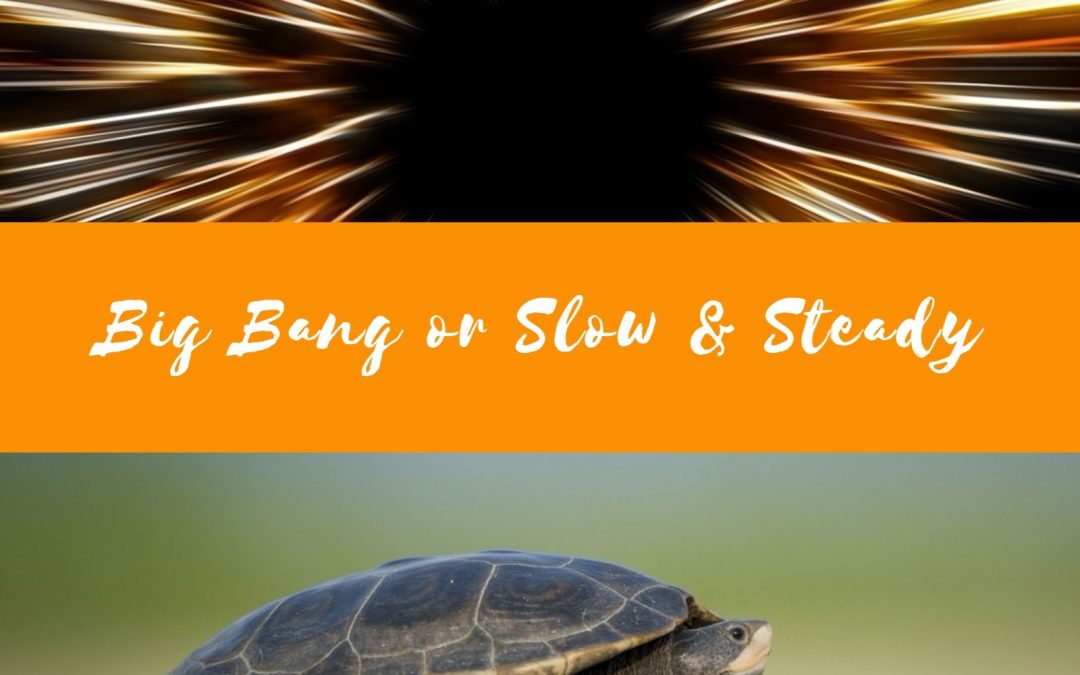
by Scott Howard | Feb 8, 2018 | Marketing and Advertising Insights, The Not-So-Secret Writings of ScLoHo, Uncategorized
What kind of marketing and advertising plan is best? A Big Bang or Slow & Steady?
All depends on what you’re needing to accomplish.
Every once in awhile I see businesses do the exact opposite of what would work best for their goals.
First, let’s lay out the different options and pick a marketing budget of, how about $50,000.
If I have an event coming up, say a concert I am going to create a different plan compared to a retailer that is open year round.
And by the way, that $50,000 is a relative number, I work with companies that spend that much in a week, and others that take 5 years to spend $50,000 in advertising.
The concert is an event. The goal is to sell tickets and fill seats on a specific date and time and place. There is an end. Once the event is over, it’s too late to sell tickets.
Your goal for advertising and marketing is clear for this concert. So here’s what to do:
Advertising wise, you want to do a push leading up to the date that tickets become available. Depending on the popularity of the performers, you need to spend more for lessor known artists because they are not going to have as large of a fan base.
You need to reach as many people as possible who are likely to attend your event. Advertise until the concert is sold out, or the date of the concert.
Plain and simple rule for event advertising when it’s a one-time event is this: 
Connect and invite as many of your likely buyers as possible starting with the date that tickets are available until the event. I can help you plan that strategy, because there are numerous factors that need to be taken into consideration. This is the Big Bang Approach.
There is a different approach that you need to take with advertising and marketing your company that is going to be around for awhile. The Slow & Steady Approach. Here’s how it works:
I’m going to go back to that $50,000 advertising budget again. The slow and steady approach is to spread that out over the course of a year, spending an average to $1000 a week. Your goal is build your business so that at the end of year one, you have momentum going into year two. That momentum is from happy customers who come back and use you again and they also recommend you to their friends and family.
But spending $1000 a week to drive people to your business is not as simple as it sounds. I’ve seen businesses do that and waste their money because they didn’t follow the Human Relationship Principles I mentioned recently. 
When you spend your $1000 a week every week, you need to build trust with your potential customers. If you jump around and advertise at one place for a couple of weeks, then advertise someplace else for a couple of weeks, you are not building momentum. This is true no matter what advertising platform you use.
Imagine that you open a store on a busy corner on the northeast side of town and 3 weeks later, close your store and reopen on another corner on the southwest side of town. A few weeks later, you close that store and open up downtown. That’s what happens when you start and stop your advertising on different advertising platforms.
Slow & Steady works if you have reasonable expectations, coupled with a business operation that can handle new customers and you are in it for the long haul. I can share with you some success stories and examples of companies that I’ve worked and help you design a program that could work for your business.
So back to the original question:
What kind of marketing and advertising plan is best? A Big Bang or Slow & Steady?
All depends on what you’re needing to accomplish.
Want help figuring it out specifically for you and your situation? Contact me.
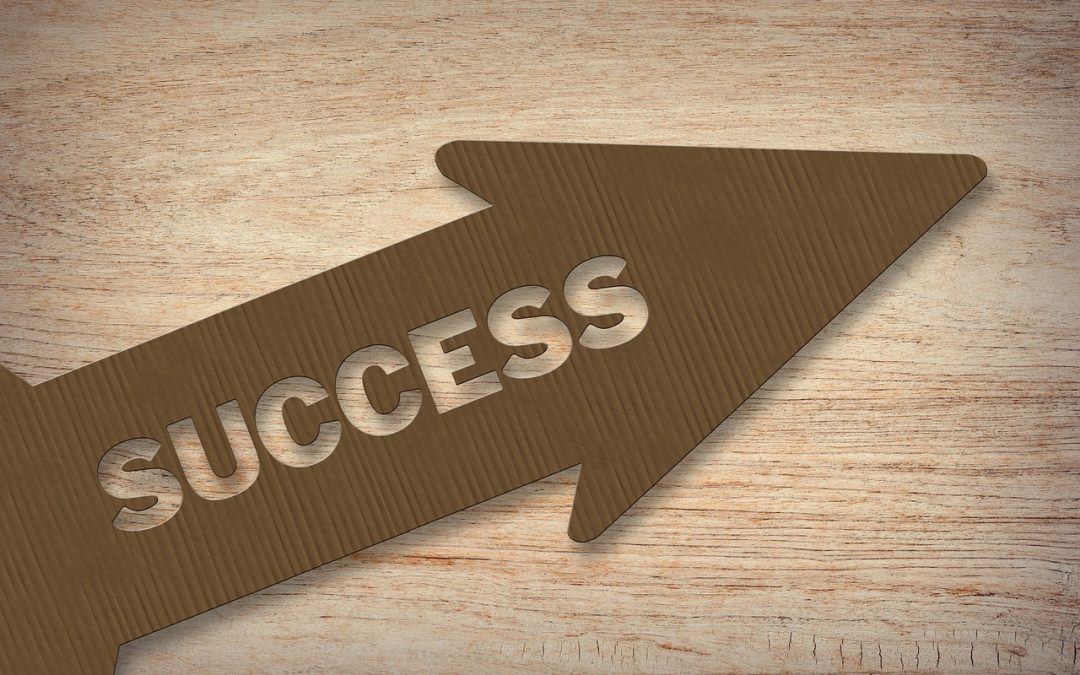
by Scott Howard | Jan 31, 2018 | Marketing and Advertising Insights, The Not-So-Secret Writings of ScLoHo, Uncategorized
Over the years, I’ve mentioned that you need to use Human Relationship Principles in your marketing and today, I’m going to take the time to lay it all out for you with The Human Relationship Secret to Marketing Success.
First, let’s talk about the problem with a history lesson.
The problem is it can be challenging to be successful in business because you need to sell stuff at a profit and you need customers who will buy from you at the right price to make it all balance out.
There are thousands of companies that start out with excellent ideas and an almost perfect business plan but they lack customers and end up failing.
Advertising and marketing can be confusing and I’ve seen many people try various ideas to get customers and yet often they are missing the Human Relationship factor.
Let’s dig into history for a couple of seconds.
Before commercial television and radio, and yes, way before the internet, print advertising was the method most businesses advertised. Posters, signs, newspaper and magazine ads were the beginning of the modern advertising age a couple centuries ago.
But even before paid advertising, there was another way our ancestors found out about stuff to buy (or trade) and that was simple human interactions that didn’t require even written communication.
Word Of Mouth is the term we use for this. It’s simply conversation between people. Friends telling friends about something they’ve done or discovered. This form of communication is based on trust and uses the human relationship factor that is rooted in our souls.
Over time as advertising campaigns were developed and mass media evolved, the best ad campaigns used this human relationship principle. Advertisements used movie and tv stars as spokespersons and early commercial radio stations did the same. This practice of celebrity spokespersons continues today. Just last week, I was watching Jeopardy with Alex Trebek when one of the commercials featured Alex selling life insurance. And on Superbowl Sunday, there will be a few celebrities making appearances in some of the ads including Cindy Crawford and Morgan Freeman (for us Baby Boomers).
But despite the popularity of celebrity endorsements in advertising, that type of ad is not as powerful as the recommendation from a friend. 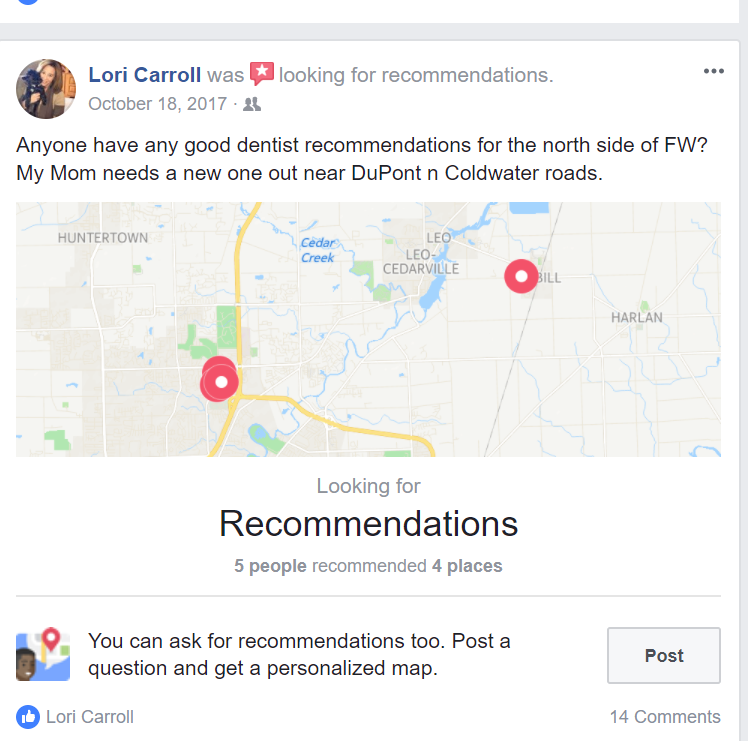
Facebook is looking to capitalize on this, when they added the Recommendation option to the posts you create, but like I said this is nothing new. The challenge is how do you implement Human Relationship Principles in your marketing?
Probably the best advice I can give you is what NOT to do.
Think about the way you talk with friends.
Do you scream at them like we sometimes see in obnoxious car dealer TV ads? No, that’s not good.
Do you talk real fast and give someone the phone number of website address multiple times when they ask you for a recommendation? Probably not.
Here’s one that is bound to create some backlash from my friends in the advertising business… Do you have music playing in the background to enhance your answer to your friend? Most radio and TV ads do.
Now I admit that I use some of these, like music on occasion in radio ads to create a feel or evoke an emotional connection. Giving a website address is also common, but it is becoming rare because I can simply ask Siri or Alexa or Google to connect me with the name of the business and that usually works these days.
There’s another Human Relationship Secret to Marketing Success you need to know about that I’ve only touched on and that is Trust.
How do you become trusted? One element is by becoming familiar to your customer. In the ad business we call this Frequency, as in how often your advertising message is heard by the person you want to reach.
I’ll revert back to the human relationship principle to dig deeper on this.
Dating and marriage. Often I will ask someone how long they dated their spouse before they married. I have never had anyone tell me that they married their partner on the first date. Why? Because it takes frequency or multiple dates in build familiarity and trust.
You’re not going to commit to marry someone you don’t trust.
And you are not likely to buy a product or service from someone or a business that you don’t trust. At the very minimum, you need to have a level of trust that what you are spending your money on will provide you with the value that is at least equal to the money you spent right?
You may have noticed that I really didn’t focus on which advertising medium is the best or what new social platform will make you widely successful. Because those are just tactics that will continue to change as time marches on. For real lasting success, you need to start with the right foundation and that is the Human Relationship Principles and Factors that are both universal and timeless.
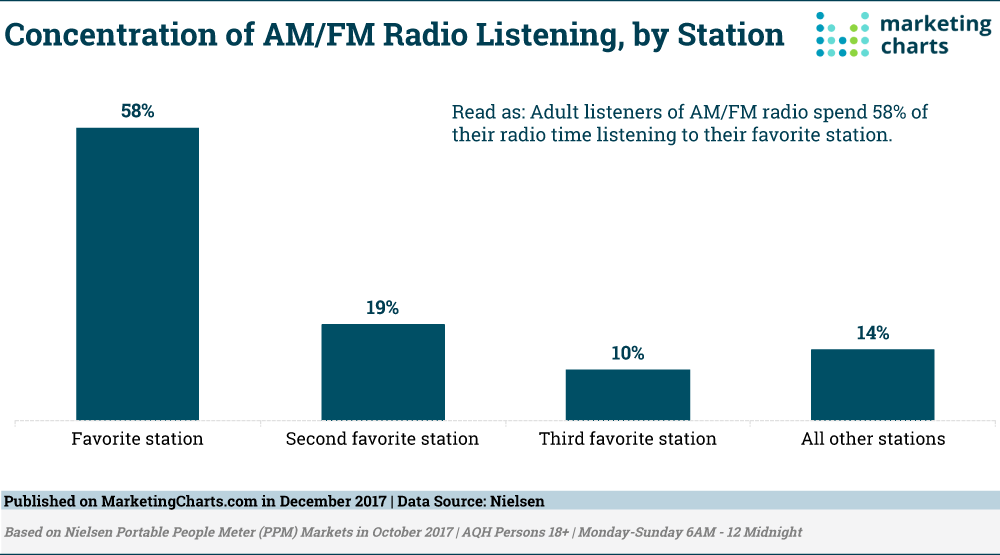
by Scott Howard | Jan 25, 2018 | Marketing and Advertising Insights, ScLoHo's Collective Wisdom, ScLoHo's Fort Wayne, ScLoHo's Media, The Not-So-Secret Writings of ScLoHo, Uncategorized, WOWO Fort Wayne Radio Advertising with Scott Howard
If I asked you to Name Your Favorites in a number of categories, depending on the category, you could easily rattle off your top two or three, right?
Here’s an example:
Name your favorite food.
I’ll wait a second.
Depending on where in the world you live, and how specific you want to get, you were able to name at least three things you like to eat.
My top three list would include:
- Seafood (including shrimp, crab and scallops)
- Chicken
- Salad
Your list is probably completely different, but that’s okay. There are thousands of options. And yet each of us have narrowed our personal choices down to a handful or two.
Radio and Television is like this too. So is the internet but I’ll save the way this works on the web for another day.
I still have cable TV and with that there are over 100 choices. But personally, I stick to about 5 or 6 channels for most of my viewing. They are my favorites. Can you Name Your Favorites?
A dozen years ago, I was talking to a local auto repair shop owner about advertising. He hemmed and hawed and finally said there are too many radio stations out there for people and that was his reason for not picking mine.
I did a search for Auto Repair in my area and found there were nearly 10 times as many auto repair shops as there were radio stations and he conceded that he was wrong.
But no matter how many choices there are, we have our favorites in nearly any category.
Nielsen, the company that specializes in radio and television listening and viewing habits around the country recently released a study that shows how this works with radio listenership.
Radio listeners are either extremely loyal or extremely selective, depending on one’s perspective. Whichever it is, the data remains the same: listeners devote the majority of their tune-in time to their favorite station, according to a recent Nielsen study.
In fact, AM/FM radio listeners spend fully 58% of their time with their preferred station. All told, their three favorite stations combine for an impressive 86% of all their listening time.
Due to my working in the industry, I have access to specifics for Fort Wayne radio listener habits and here’s what I discovered:
News and Talk Stations have the most loyal audience according to the amount of time spent listening. WOWO radio and WBOI are the two stations considered news/talk. WOWO is the commercial station I work for and WBOI is the National Public Radio station in town. WOWO’s audience size (the number of people listening) is huge, more than double the public radio station, and the time spent listening to the shows on WOWO each week is also greater than WBOI according the the Eastlan Fall 2017 rating data.
What’s the difference between being someone’s favorite and their second or third favorite radio station?
- Nearly 60% of a persons radio listening is to their favorite station.
- Less than 20% of the time, a person listens to their second favorite station.
- They only spend about 10% of their radio listening time tuned into their personal 3rd favorite station.
A couple of takeaways for you to remember:
- Everyone can name their favorites in many life categories
- Radio stations have a core audience of listeners that are loyal to their favorite stations and you should keep that in mind when deciding where to advertise
And a bonus tip for you:
Some business categories have not been developed with clear leaders or favorites. There are multiple factors for this but mostly it has to do with creating a memorable brand and marketing it to buyers and influencers. Advertising can help establish your business as a favorite and if you want to know more, contact me.

by Scott Howard | Dec 6, 2017 | Marketing and Advertising Insights, ScLoHo's Web World, The Not-So-Secret Writings of ScLoHo, Uncategorized, WOWO Fort Wayne Radio Advertising with Scott Howard
Why do I say Your Digital Marketing Is Bologna?
Especially because I actually sell online digital marketing solutions along with the more traditional radio advertising solutions?
Because it hit me the other day, that those people who only sell digital marketing are often selling the same line of bull, excuse me, bologna that Yellow Pages people used to sell to prove they were a good advertising investment.
Laura from Bain and Company was quoted in an article from Google:
We need to move away from last-click attribution models to something that better reflects a consumer journey, which is nonlinear and has gaps in the data.
In order to tell you why this is important, we’re going to take a minute and explain the old phone book advertising sales technique. I learned this years ago from a co-worker who used to sell yellow pages advertising before he made the conversion to radio advertising sales.

This is what a phone book used to look like
The phone book advertising sales people would tell the businesses that advertise to track their advertising by asking some variation of this simple question:
How did you get our (business) phone number?
More than half the time, sometimes as much as 90% of the time, the customer on the other end of the phone would say:
I got your number from the phone book.
Which was probably true. I mean, they had no reason to lie, and yes they really did get your number from the phone book.
But that’s not the right question to ask to track your advertising.
Depending on the other advertising and marketing that the business was doing, along with their word of mouth reputation, the really successful businesses already were being considered by the customer and the phone book was simply a tool to get the phone number to call the business.
The phone book does absolutely nothing to brand a business, it’s just the way we get the phone number. That’s what I used to say all the time until Google changed the internet and Facebook changed our social communication.
Since the advent of the internet and the demise of the paper-published-phone-book-yellow-pages-directory, the phone books are a lot skinnier.
Only old people have a phone book anymore. And by old, I’m saying 85 year olds.
Those last couple of statements are broad generalizations. Yes, there are some 70 year olds who still have a phone book in their junk drawer in their kitchen and a few other people too.
Digital marketers for the last several years have adopted the tactic that the old yellow page advertising sales people used to use to claim credit for making your business phone ring, or any of the other ways your future customers can contact you.
C. T. R. which stands for Click Thru Rate which is the digital equivalent of asking where do you get our phone number.
Both only measure the last action taken and totally disregard all the previous marketing and advertising efforts that led to that last action or conversion.
We are not robots, we are humans. That’s why I look at all this marketing and advertising from a human relationship standpoint that takes all of the influencing factors into consideration.
I mentioned at the beginning of this piece that I sell both radio and online advertising solutions with WOWO radio and Federated Media Digital Solutions and often use a combination of these to drive more business to my advertising partners.
While it is possible to look at Click Thru Rates and other tracking with your online and digital efforts, if I were to tell you that was the only way to determine your success, it would be a lie. That’s why I say Your Digital Marketing Is Bologna. There is really nothing wrong with it, just the way you are being sold and I’m sure you prefer an honest approach right?
Talk to me if you want to… talk.
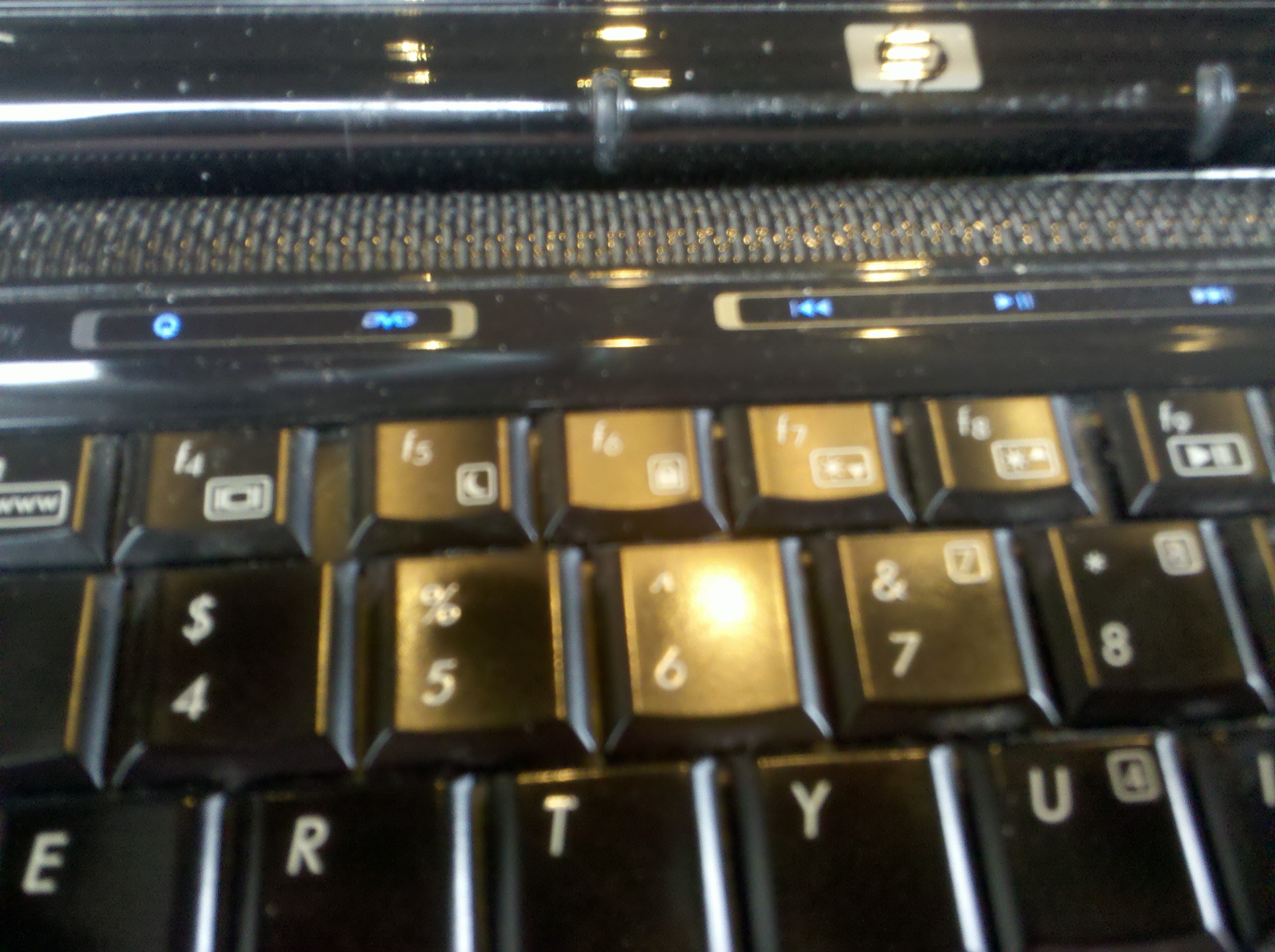
by Scott Howard | Nov 6, 2014 | The Not-So-Secret Writings of ScLoHo, Uncategorized
 For #TBT also know as #ThrowBackThursday, this piece I wrote in 2009:
For #TBT also know as #ThrowBackThursday, this piece I wrote in 2009:
I serve on a few marketing advisory boards and I have noticed how some folks are either confused by, or scared of new technology.
Let’s take some of the mystery out of it.
Technology advances are coming at us faster and faster it seems but they are only tools.
And you have to use the right tools to accomplish the task at hand. A pipe wrench isn’t the best tool to change a light bulb, but you probably could use it.
Before you decide which tool to use in your marketing, keep in mind the following timeless principles:
- The very best marketing method mimics human relationship principles.
- In order to build relationships, you need to have positive contact repeatedly.
- Anything that does not follow these two principles should be examined very carefully before you decide to invest your time or money in it.
For centuries, men and women have gone through a courtship stage in their relationships. Many times, this leads to marriage. And that is one of the ultimate examples of how marketing works.
Yes, there are other outcomes between men and women, ranging from friendship to one-night-stands. But what type of relationship do you want with your customers? I bet if you were really honest with yourself, you would want the one that lasts a lifetime, puts up with imperfections, stands by you even when you screw up, and smiles when they think of you.
In return, you strive to be your best, to forgive when your customer screws up, to put up with their quirks and to go out of your way to serve.
No matter what tool you use in advertising or marketing, follow these principles. They will stand the test of time.












